40 Facts about Tamerlane – Timur the Lame
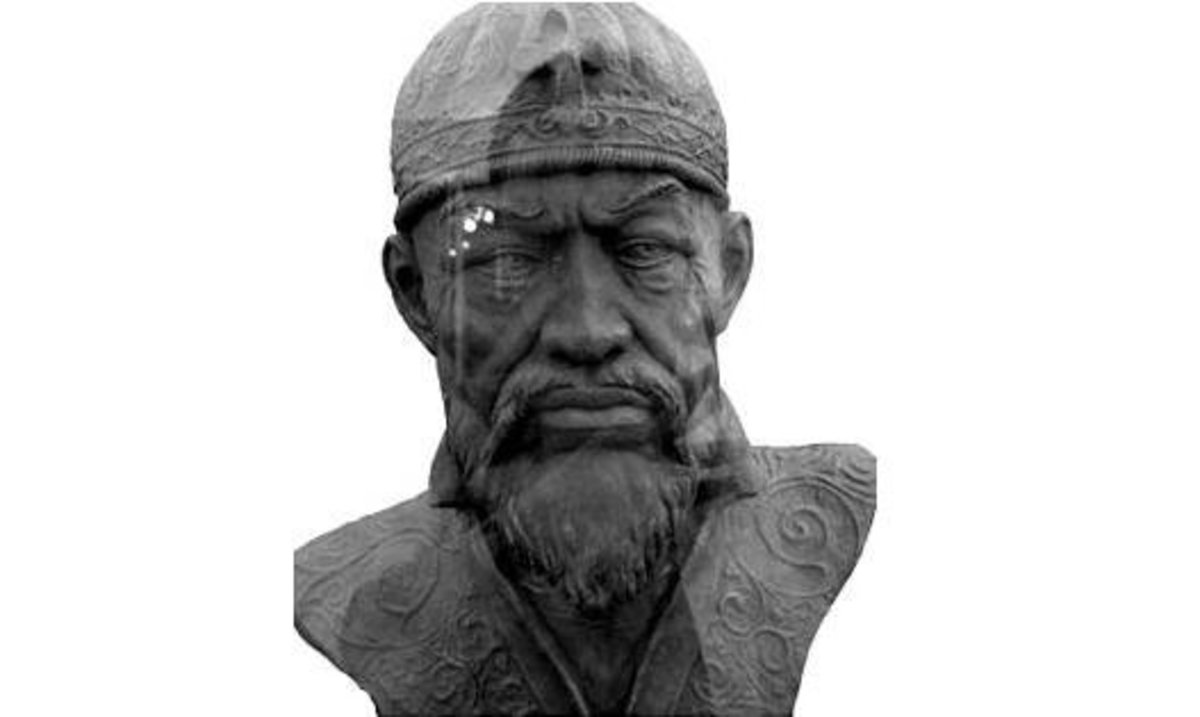
Who Was Tamerlane?
Timur was a 14th Century Turko-Mongol military leader who conquered most of the Muslim world, central Asia, and parts of India. His Timurid Empire rivaled the size and power of the Mongolian domain forged by Genghis Khan a century earlier.
Known by his nickname, Tamerlane, it’s unclear why many people in the Western world have never heard of this brutal and ingenious warlord. To rectify this neglect, the following is a list of interesting facts about Tamerlane. The list includes notable events in his life; analyzes his acerbic personality, and remarks on current impressions of this fascinating historical figure.
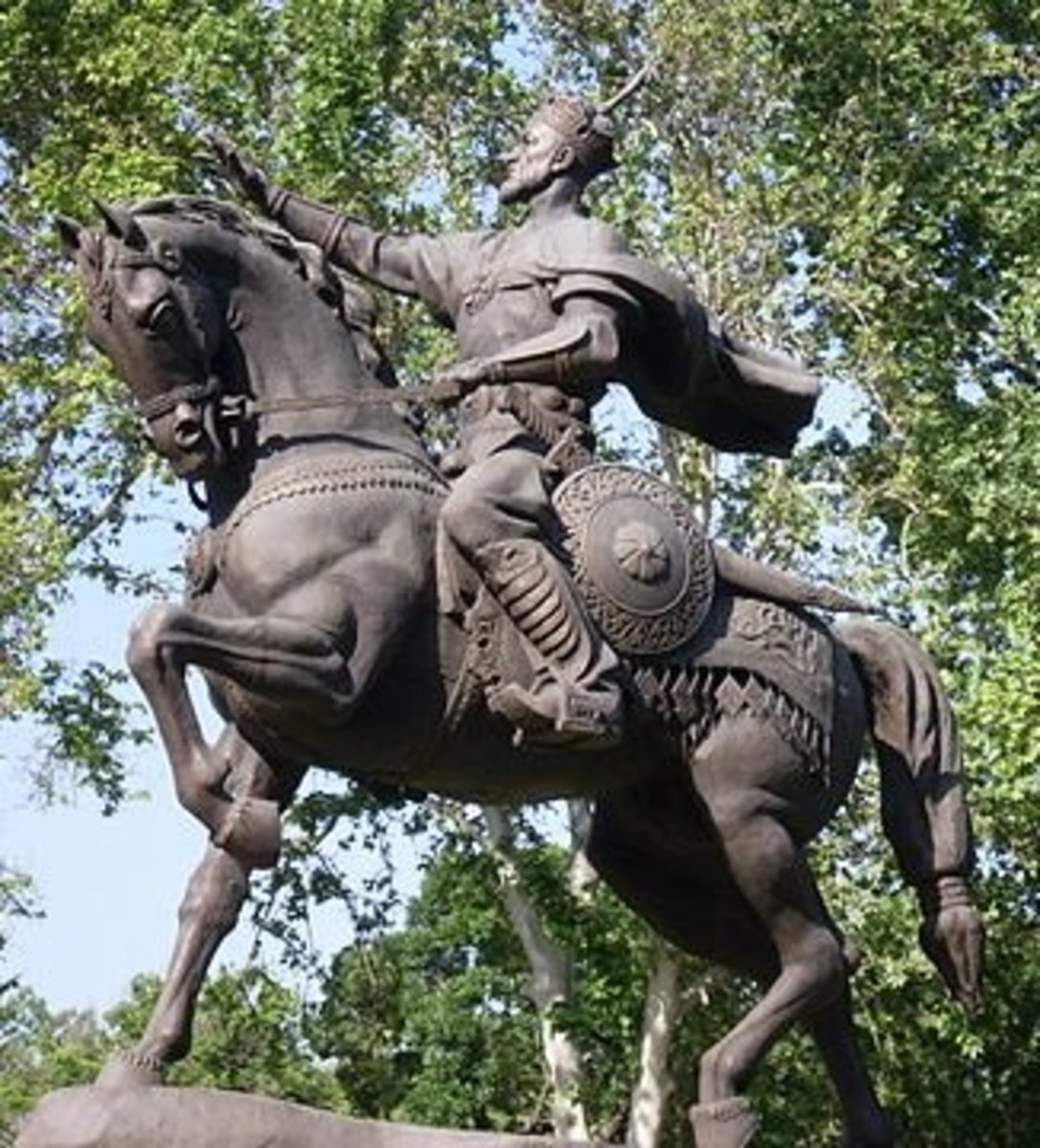
40 Interesting Facts about Timur the Lame
1. Timur (meaning `iron’) was born in 1336 near the city of Kesh in Transoxiania. This historic Persian city is now known as Shahrisabz in modern day Uzbekistan.
2. Tamerlane is the European derivation of Timur’s Persian nickname, Timur-e Lang, which means `Timur the Lame’.
3. During his mid-twenties, Tamerlane was crippled by injuries to his right leg and right hand. Legend states that he was shot by arrows when his band of thieves was ambushed by a shepherd. It’s more likely that the injuries were sustained in battle when he was a soldier for the Khan of Sistan (in north-east Iran).
4. In 1941, Russian archaeologists excavated Tamerlane’s tomb, confirming that he had a debilitating hip injury and two fingers missing from his right hand.
5. The excavation revealed that he was tall for the time (1.73 m) and broad-chested. He had prominent cheek bones and Mongoloid features (see reconstruction).
6. Timur’s tomb was allegedly inscribed with the words “When I rise from the dead, the world shall tremble”.
7. His coffin supposedly read: “Whoever opens my tomb shall unleash an invader more terrible than I”. Hitler invaded the USSR within two days of the exhumation, and when Timur was finally reburied, the Soviet victory at Stalingrad shortly followed.
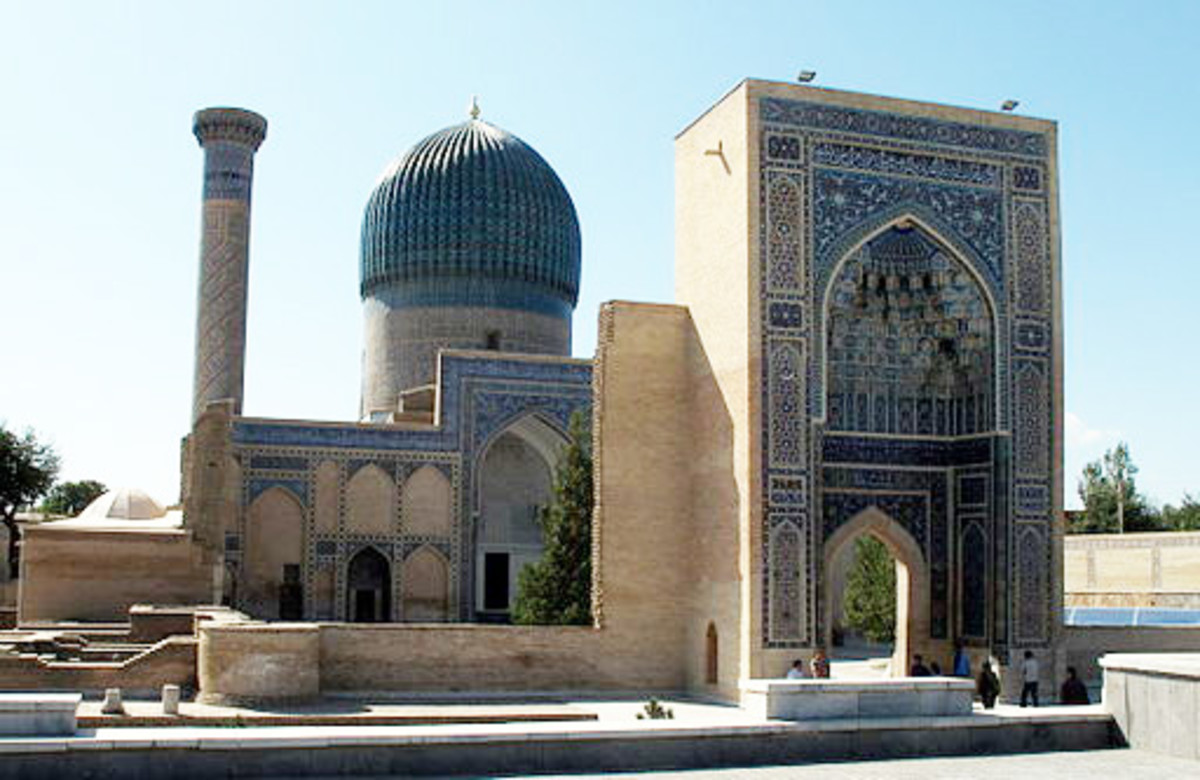
8. Tamerlane’s ambition was to rebuild the empire of Genghis Khan, who had died a century earlier.
9. His military conquests saw him conquer land that comprises the modern day countries of Iraq, Iran, Afghanistan, Pakistan, Azerbaijan, Georgia, Uzbekistan, Turkmenistan, Tajikistan, Kyrgyzstan, large parts of Turkey and Syria, and the north-western portion of India (Delhi).
10. It is estimated that his armies killed 17 million people, which was about 5% of the global population at the time.
11. He referred to himself as the `Sword of Islam’ and converted much of his empire to the religion. This included Genghis Khan’s descendents, the Borjigin clan.
12. Tamerlane’s own religious affiliation is unclear, and he may have been using Islam as a means to consolidate and exert power. Indeed, he was a highly intelligent politician who spoke Turkish, Mongolian and Persian.
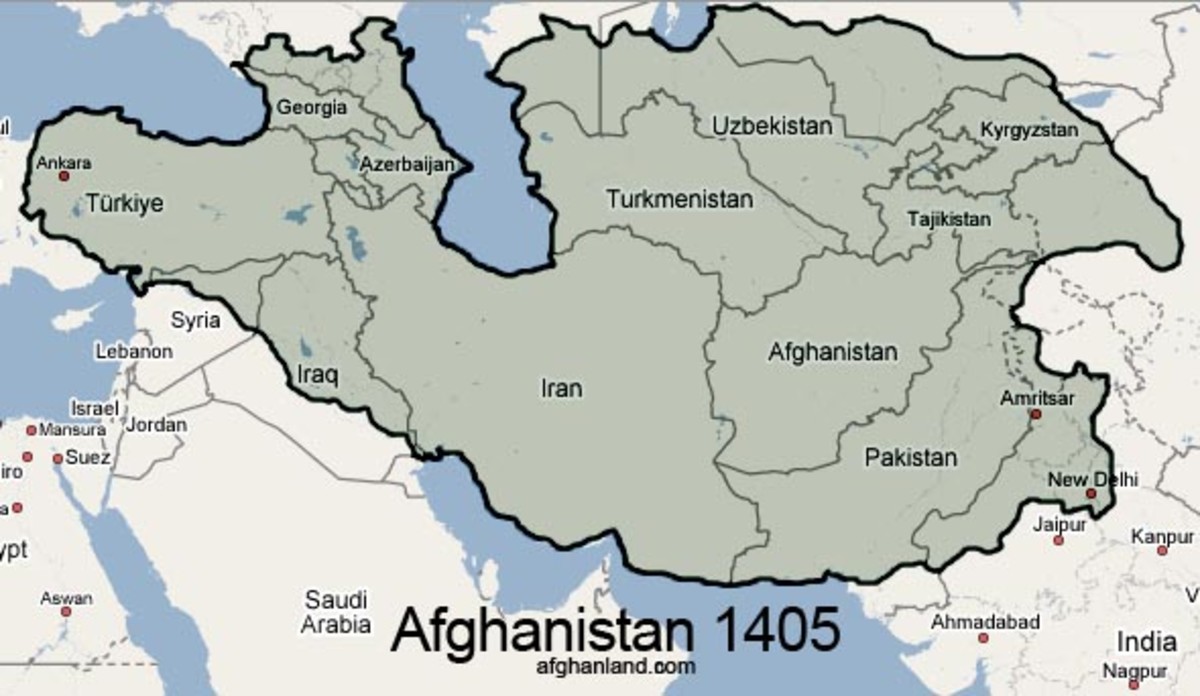
13. Tamerlane’s father was a prominent member of the Barlas tribe, which had been close with Genghis Khan’s Borjigin clan. However, the Barlas tribe had been converted to Islam and spoke Turkish.
14. Despite this, Tamerlane idolized Genghis Khan and used similar methods to build his empire. For example, he was a military mastermind who led a multi-ethnic army. He instilled great loyalty, and was adept at taking advantage of temporary weaknesses in the political state of his enemies. He also used spies and propaganda to sow the seeds for invasion, and planned his campaigns years in advance.
15. Tamerlane was a natural leader. He spent his teenage years leading a band of petty thieves. They stole livestock from farmers, and property from travelers and merchants.
16. In his twenties, Tamerlane fought under the rule of various Khans and Sultans. His leadership skills led to him being given command of a thousand soldiers for an invasion of Khorasan (in north-east Iran). The success of this mission led to further commands and prestige.
17. When his leader, Kurgan, died, the subsequent struggle for power was eventually halted by the invasion of Tughlugh Khan from the Mongol Chagatai Khanate. The head of the Barlas tribe fled the invasion, and Timur was chosen by the Mongols as his replacement.
18. When Tughlugh Khan died and entrusted Transoxiania to his son Ilyas, Timur and his brother-in-law, Amir Husayn, sensed their opportunity and took the region by force.

19. Now in his mid-thirties, Timur was a tribal leader with a territory to defend. He used his power wisely, showing kindness and charity to nobles, merchants, and the clergy. This gained him many allies, and much power.
20. Amir Husayn treated his subjects harshly and became jealous of Timur’s growing power. They quickly became rivals, forcing Timur to capture Amir. He was later assassinated, giving Timur complete control in northern Iran and Afghanistan.
21. Tamerlane dominated over the Chagatai chieftains to the north-east, and eventually claimed the Mongol territory by marrying, Saray Mulk Khanum, a Chagatai princess and descendant of Genghis Khan.
22. Tamerlane was unable to become the Mongol emperor because he was not a descendent of Genghis Khan. Likewise, he couldn’t claim legitimacy in the Muslim world because he wasn’t a descendent of Muhammad. Instead he ruled the Chagatai Khanate via a puppet ruler, and attributed his military successes in Persia to the will of Allah.
23. Timur led his armies in all directions over the next three decades. In the south and west, Persia was completely conquered. To the north-west, Georgia and Azerbaijan were taken. To the north, the Mongol “Golden Horde” was decisively defeated, though he avoided threatening the Mongol homeland to the north-east.
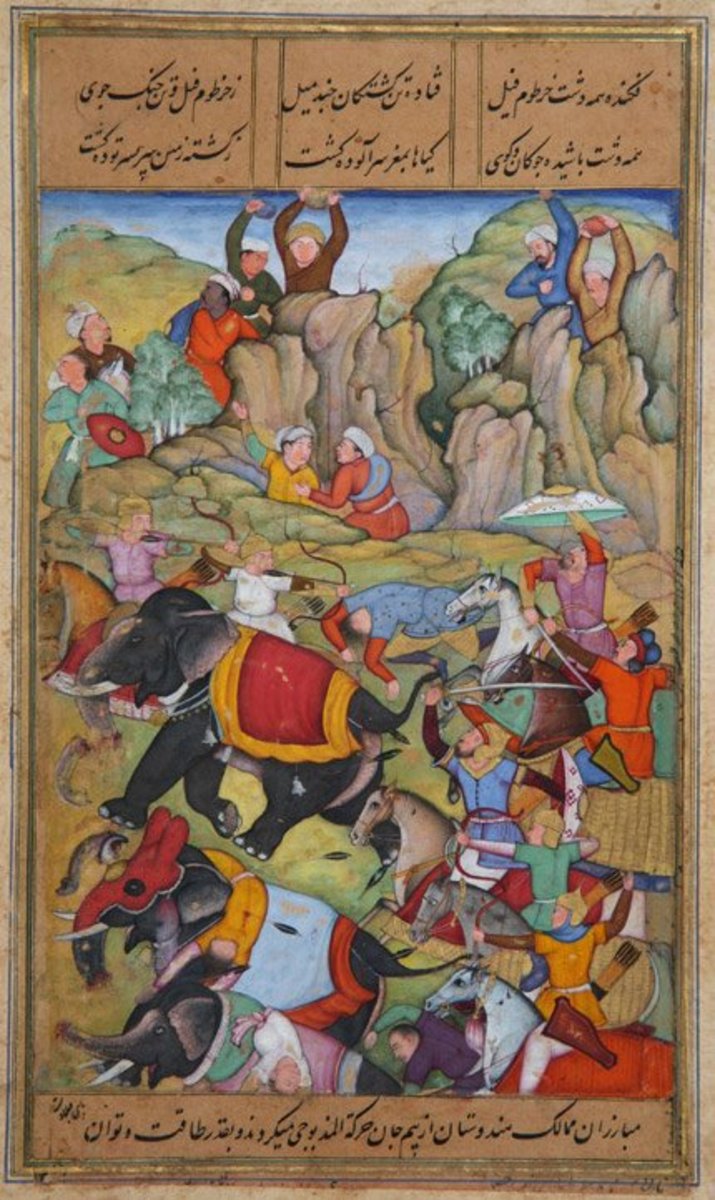
24. In 1398, and at the age of 62, Timur was now a legendary conqueror with a vast territory. He turned his army towards India in the south-east. Unlike his other conquests, Timur slaughtered the Pakistani and Indian people, justifying the barbarism as a holy war against the Hindu religion.
25. The Sultan of Delhi used war elephants, covered with chain mail, to terrify Timur’s troops. In a stroke of cruel genius, Timur placed hay on the backs of camels, set the hay on fire, and prodded them until they painfully charged at the elephants. The elephants turned and stampeded their own troops, granting Timur an easy victory. The population of Delhi were massacred.
26. Much like Genghis Khan, Tamerlane was opportunistic. His campaigns of Persia and Delhi took advantage of power struggles that had weakened their defenses.
27. Timur’s cruelty grew in his later years. Legend states that his invasion of Baghdad (Iraq) in 1399 required each of his soldiers to show him two severed heads from the largely Christian population.
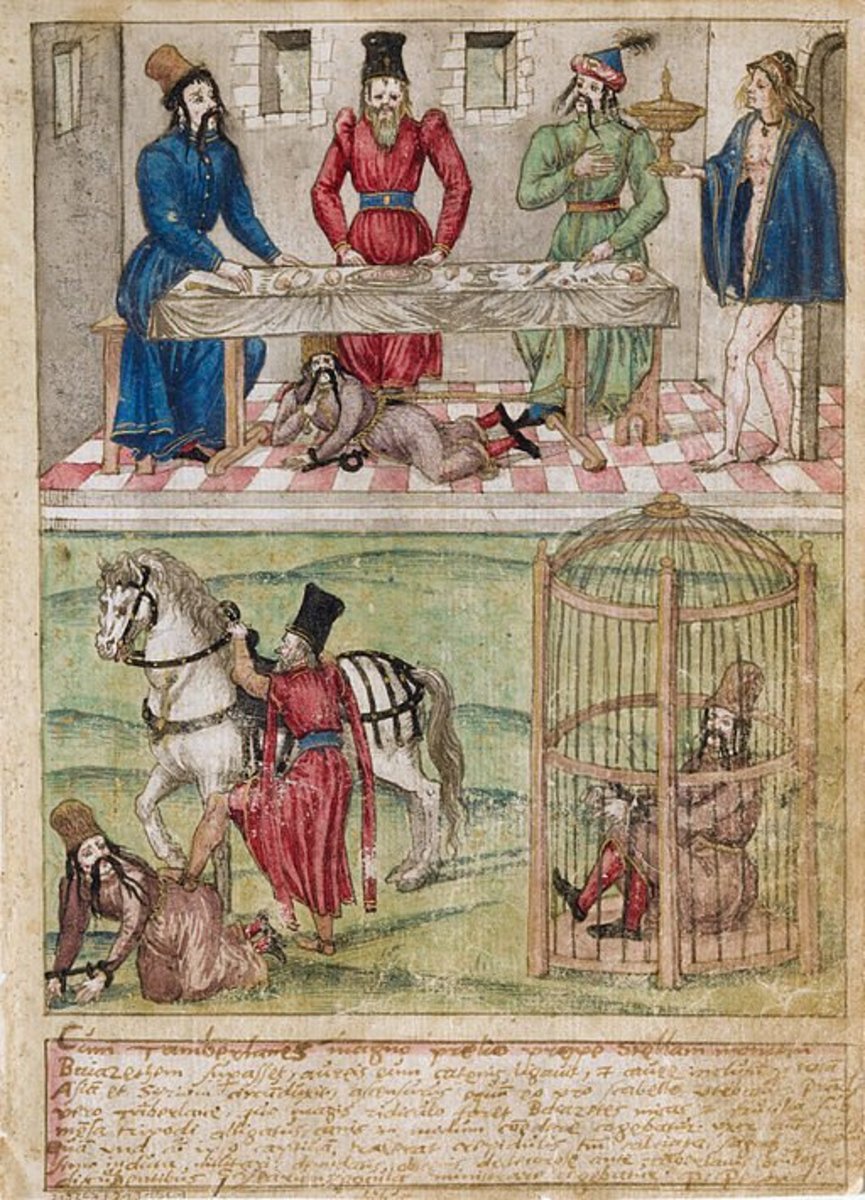
28. In revenge for insulting letters sent by the Ottoman Sultan Bayezid (Turkey), Timur conquered the Ottoman Empire in 1402, and Bayezid died in captivity.
29. His victory began a civil war in Turkey in which Timur’s candidate, Mehmed I, secured power. Mehmed belonged to a tribe that the Mongols had previously allowed to rule the region.
30. Tamerlane had friendly relations with some European states, namely France and Spain. Both he and the Europeans saw themselves as reluctant allies against the Ottomans.
31. Right up until his death, Timur continued to expand his empire. The leader of the new Chinese Ming Dynasty had insulted Timur, provoking his wrath. However, after 3 months of successful battles, the campaign ended when Timur succumbed to fever and died.
32. Despite preferring spring assaults, Timur had prematurely attacked the Chinese during the harsh winter of 1404. This suggests that his anger at the Chinese contributed to his demise.
33. Timur Tamerlane died on the 17th of February 1405 at the age of 68. His body was embalmed and buried in an ebony coffin in Samarkand, fifty miles north of his birthplace in Kesh.
34. Timur had 4 sons. The eldest two, Jahangir and Umar Shaykh, died before him, while Miran Shah died soon after. Timur was succeeded by his youngest son, Shah Rukh.
35. The Black Sheep Turkmen destroyed the western half of his empire when they sacked Baghdad in 1410, though Shah Rukh continued the Timurid dynasty by retaining control of the eastern half. He set up his capital in Herat, Afghanistan.
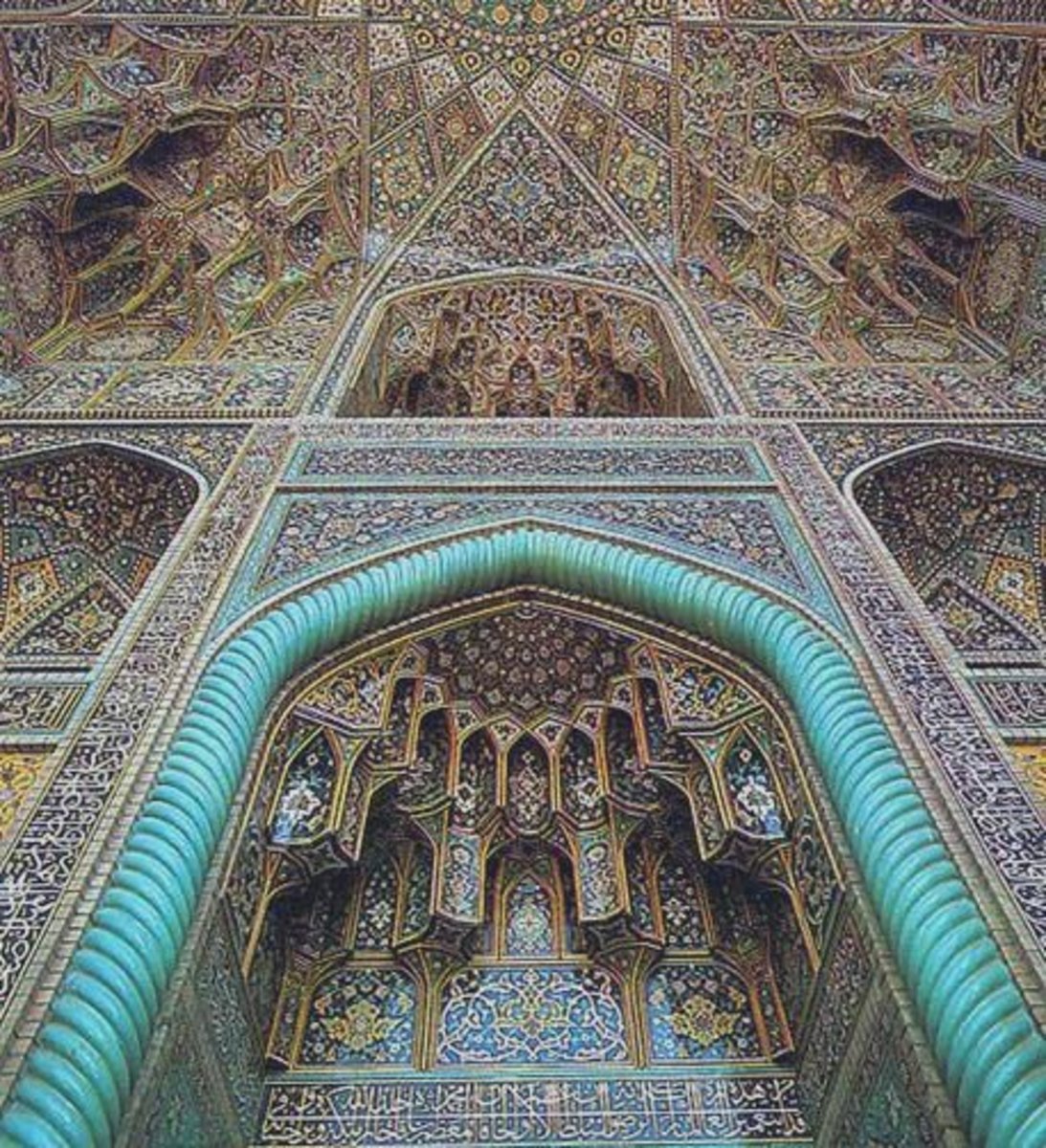
36. Tamerlane’s descendents include Babur, founder of the Indian Mughal Empire, and the scientifically adept Timurid ruler, Ulugh Beg.
37. The Timurid Empire lasted until 1507. The Persian Safavid dynasty took most of Iran in 1501, while a contingent of Uzbek tribes invaded from the north to take Herat in 1507.
38. Like many other formidable leaders, Tamerlane’s legacy is unclear. He is regarded as a hero in central Asian states such as Uzbekistan.
39. In much of Iraq, Iran, Pakistan, and India, he is vilified as a monster for massacring the populations. Nevertheless, some Muslim scholars applaud him for uniting the Muslim world.
40. Despite forcing Christians out of much of the Muslim world, he was highly regarded in Europe for defeating the Ottomans, though that impression has become less favorable in recent times.
A Short Lecture About The Timurids
It’s unclear why Tamerlane and the Timurid Empire are under-represented in popular historical discourse. Perhaps it’s because his achievements were very similar, but slightly less notable, than those of Genghis Khan. Why speak of the second greatest Asian ruler when you can speak of the first?
It’s possible that his empire was too short-lived to be given much attention (137 years). After all, the Persian, Ottoman, Mongol, and Mughal Empires survived far longer. Perhaps, his cruelty discouraged the civilizations who could have popularized his story; or maybe his lameness caused fewer writers to glorify his achievements. While others have succeeded in immortalizing themselves with barbarism, we may never know why Tamerlane escaped a similar degree of notoriety.
https://owlcation.com/humanities/40-Facts-about-Tamerlane-Timur-the-Lame


1 thought on “40 Facts about Tamerlane – Timur the Lame”